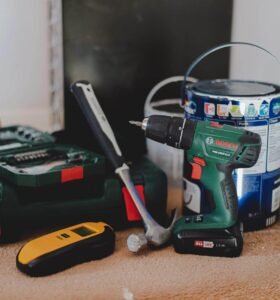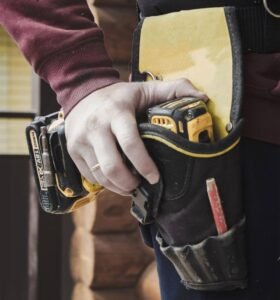When it comes to tackling basic home repairs or simple DIY projects, having the right tools at your fingertips can make all the difference. Hand tools are the foundation of every toolbox — and whether you’re hanging a picture frame, assembling furniture, or fixing a leaky faucet, these tools will help you get the job done efficiently and safely.
In this post, we’ll walk you through the essential hand tools every homeowner should own, what they’re used for, and some handy tips on choosing quality gear that lasts.
1. Claw Hammer
Use: Driving and removing nails, minor demolition.
Every toolbox should start with a sturdy claw hammer. The flat face is used to drive nails into wood, while the curved “claw” on the back helps pull them out. Look for a hammer with a comfortable, non-slip grip and balanced weight for better control.
2. Screwdriver Set
Use: Tightening or loosening screws of various types.
A multi-bit screwdriver or a set that includes both Phillips and flathead types is essential. Bonus points for magnetic tips and ergonomic handles. These are needed for everything from removing outlet covers to tightening cabinet hinges.
3. Tape Measure
Use: Measuring distances, marking placements, planning projects.
A good 25-foot retractable tape measure is a must-have. Whether you’re buying furniture, measuring a wall, or laying out garden space, a tape measure keeps things accurate. Choose one with clear markings and a locking mechanism.
4. Adjustable Wrench
Use: Gripping and turning nuts, bolts, and pipes.
An adjustable wrench can fit a variety of sizes, making it more versatile than fixed wrenches. It’s especially useful for plumbing work or assembling furniture with large bolts.
5. Pliers (Needle-Nose & Slip-Joint)
Use: Holding, gripping, bending, and cutting wires or materials.
Needle-nose pliers are perfect for reaching into tight spaces, while slip-joint pliers offer a strong grip for turning objects or crimping. A combination of both types covers most basic needs.
6. Utility Knife
Use: Cutting cardboard, plastic, carpet, or opening packages.
From home repairs to craft projects, a sharp utility knife is invaluable. Always use it with a steady hand and retract the blade when not in use. Consider one with a built-in blade storage compartment.
7. Level
Use: Ensuring surfaces are perfectly horizontal or vertical.
No one likes crooked picture frames or uneven shelves. A small spirit level helps ensure everything is aligned just right. For more advanced tasks, consider a digital level or laser level.
8. Hex Key (Allen Wrench) Set
Use: Assembling furniture, working on bikes, and fixing appliances.
Many modern furniture pieces (like those from IKEA) require hex keys. A set with both metric and SAE sizes ensures you’re prepared for anything.
9. Handsaw
Use: Cutting wood and plastic for small projects.
Whether you’re trimming branches, cutting PVC pipes, or working on DIY woodworking projects, a handsaw is a powerful addition to your toolkit without needing electricity.
10. Tool Box or Bag
Use: Keeping everything organized, portable, and protected.
A durable toolbox or tool bag isn’t just storage — it makes your tools easy to carry and reduces the chance of losing or damaging them. Look for one with compartments for small accessories like screws, nails, and washers.
Bonus Tools Worth Adding Over Time:
- Stud Finder: For safe drilling and hanging.
- Wire Cutter/Stripper: Especially useful for basic electrical fixes.
- Measuring Square: Great for woodworking and framing.
- Chisel Set: Perfect for shaping wood and scraping surfaces.
Tips for Buying Quality Hand Tools:
- Buy reputable brands known for durability and warranties.
- Opt for comfort grips to reduce fatigue during long projects.
- Avoid cheap plastic materials that break easily under pressure.
- Maintain your tools by cleaning after use and storing in dry places to prevent rust.
Final Thoughts
Investing in a set of high-quality hand tools is one of the smartest things a homeowner can do. You don’t need to fill your garage with every gadget under the sun — just start with the basics listed above. Over time, as your confidence and experience grow, you can expand your collection to match your DIY ambitions.
Whether you’re fixing a squeaky hinge or building a backyard bench, the right tools will save you time, money, and frustration.







